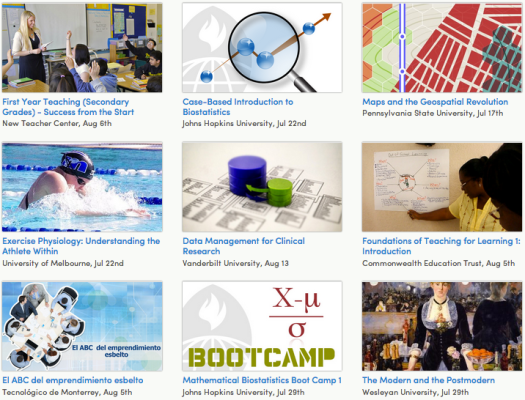With over 400 free college-level courses now in its catalog and 4 million students in its virtual lecture halls, Coursera is adding a huge new chunk of change to its coffers, announcing this morning it has closed a $43 million series B financing round from GSV Capital, the International Finance Corporation (IFC), the investment arm of the World Bank, Laureate Education, Learn Capital and renowned entrepreneur and investor, Yuri Milner, among others.
With this new capital in tow, which brings its total to $65 million, Coursera has big plans ahead. Over the last six months, the startup has been working its way into new territory, taking first steps into the K-12 market and announcing that its first five courses had been approved for “credit equivalency” by the American Council on Education. In other words, with ACE’s blessing, any student who completes one of the five courses is now eligible to receive college transfer credit.
It was just over a year ago that Coursera burst onto the higher education landscape with ambitious plans to throw open the doors to America’s top institutions, bring them online and offer an Ivy League-caliber education to the masses for free. Just two months after launch, the Mountain View-based startup put the finishing touches on an impressive $22 million funding round, backed by top venture firms like Kleiner Perkins and NEA as well as two of its university partners, The California Institute of Technology and the University of Pennsylvania.
Fast forward to the present, and backed by snowballing interest in online education and massive open online courses (MOOCs), Coursera is showing no signs of slowing down. Since launch, thanks to eager adoption from a growing set of institutions looking to jump on the digital education bandwagon, Coursera has propelled across four continents, with 83 of America’s top colleges already on board.
Initially, Coursera had established its model to cater to students looking for continuing education opportunities — in other words, those looking to take courses in their own time, outside of the classroom and the traditional education system. But ACE approval marked another step towards being able to offer a viable, accredited online education — and degree.
What’s more, traditionally the knock against MOOC platforms has been that, while their mission to bring affordable, online education to the masses is critical, the model can be tough to monetize. With significant venture backing, monetization no longer has the same urgency for Coursera. Nonetheless, earlier this year, the startup took a big step in the direction of future profitability, launching verified certificates so that students who take courses on its platform can earn a certificate for a small fee.
Called Signature Track, Coursera has been launching this on a course-by-course basis, but co-founder Daphne Koller tells us that the program has already raised $800,000. Though it’s still early, the co-founders believe it’s reason for optimism.
In spite of some impressive steps forward, Coursera still has a long way to go and a significant uphill battle ahead, as it moves to accelerate and expand on a number of fronts simultaneously. Along with continuing to seek credit for more classes, manage its expansion into K-12 and teacher education, and grow and refine its Signature Track program, Koller tells us that the startup has big plans on foreign soil.
With its new capital in tow, Coursera will begin making a significant push to expand its education platform abroad and to do so systematically through localization and translation and by developing strategic distribution partnerships with local institutions. On top of that, Coursera is going to ramp up hiring, and the co-founders plan to double the startup’s current staff of 50 by the end of the year.
Another big missing piece of the puzzle, especially in the Mobile Era, is that Coursera has yet to bring its MOOC platform to mobile devices. So, with its $43 million, Coursera has been going after mobile talent and is looking to build a suite of mobile apps that will enable “students to learn anywhere, on the go.”
Traditionally, MOOC platforms have wrestled with low retention rates, and though Koller says that a lot of this has to do with the intention students go into their courses with (if they’re committed to it, success rates are much higher), there’s still plenty of room left for improvement in terms of engagement, collaboration and interactivity in MOOC World. The space as a whole, and the educational model itself, are still nascent.
And while it may not be Coursera’s top priority at the moment, the company wants to be a part of developing the type of collaborative learning environments and virtual, group-based education methods that could significantly increase the value of both MOOC and online education platforms as a whole.
Nonetheless, like fellow MOOC pioneers and investor darlings edX and Udacity, Coursera has big plans ahead and won’t be tapping the brakes any time soon. After all, they have to continue moving forward if they want to stay ahead of the pack — which seems to be growing larger every week.
